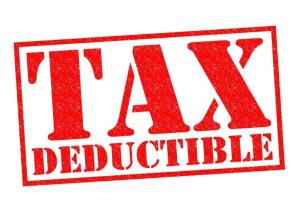Section 80JJAA : Tax Deduction for Employment of New Employees;
Section 80JJAA : Tax Deduction for Employment of New Employees;
Problem of unemployment is not a small problem for any country. This particular section was introduced by Govt. in Income Tax Act to generate more employment and to encourage people. Lets have a look at this blog and you can plan the recruitment process to claim a huge amount of deduction of additional employment cost.

What is Section 80-JJAA ?
This is a new section in respect of deduction of additional employee cost of additional employees. It is applicable from the Assessment Year 2017-18. In this blog, we will go through the conditions, amount of deduction and practical examples etc.
First of all let’s understand some important terms related to this section.
What is meaning of additional employees as per section 80-JJAA?
It means an employee who has been employed during the previous year but does not include the following:
1. Employees whose total salary is more than Rs. 25,000/- per month.
2. Employees who were employed for less than 240 days in the previous year (150 days in case of manufacture of apparel or footwear or leather products)
3. Employees who do not participate in Recognised Provident Fund like casual workers etc.
4. Employees whose entire contribution is paid by the Government, under the Employees’ Pension scheme
Moving further, now we will understand what is the meaning of Additional Employees Cost.
What is the additional employees cost as per section 80-JJAA?
Additional Employee Cost means total emoluments paid or payable to additional employees.
However, in the case of existing business, additional employees cost shall be NIL if;
A. There is no increase in the Total no. of employees which means total no of employees joined during the previous year is equal to total no. of employees left during the previous year.
Example :
- Total No. of employees as on 01 April, 2019 : 100
- No. of employees joined during the year : 20
- No. of employees left during the year : 20
- Total No. of employees as on 31 March, 2020 : 100
- In the above example, there is no increase in Total No. of employees hence not eligible to claim deduction in this case.
- In the above example, if no. of employees joined were 30, then in that case deduction of employee cost for additional 10 employees will be available subject to the fulfilment of other conditions.
B. Emoluments are paid otherwise than by A/c payee cheque or account payee draft or any prescribed electronic mode ( like RTGS, NEFT etc).
What is the meaning of emoluments given in section 80-JJAA?
Emoluments means any sum paid or payable to an employee in lieu of his employment by whatever name called, but does not include—
(a) Any contribution paid or payable by the employer- To any pension fund or
– Provident fund or
– Any other fund for the benefit of the employee under any law for the time being in force;
(b) Any lump-sum payment paid or payable to an employee at the time of- Termination of his service or
– Superannuation or
– Voluntary retirement
Example : Gratuity, severance pay, voluntary retrenchment benefits, leave encashment ,commutation of pension etc
What are the conditions to claim deduction u/s 80-JJAA?
To claim the deduction under this section, following conditions needs to be satisfied :
1. The assessee must having Income from the Business Head and he is liable to get his accounts audited as per the requirement of section 44AB along with a report of a CA in Form 10DA.
2. It should be a new business. It should not be formed by splitting up or reconstruction of an existing business.
3. Business is not acquired by way of transfer from any other person or as a result of any business reorganisation.
4. Deduction should be claimed in the income tax return.
For more details, please be in touch with your CA
